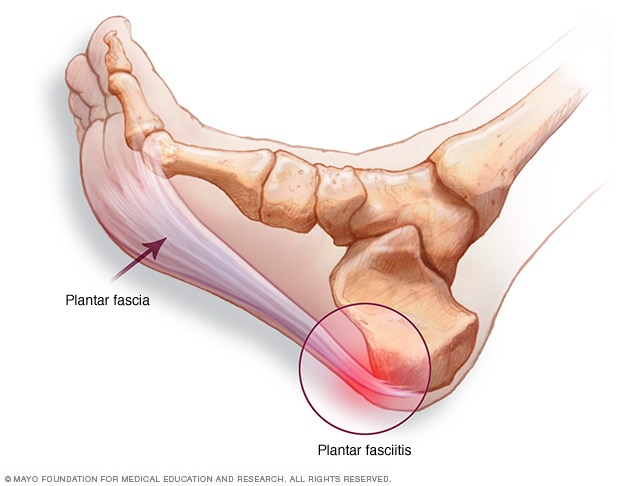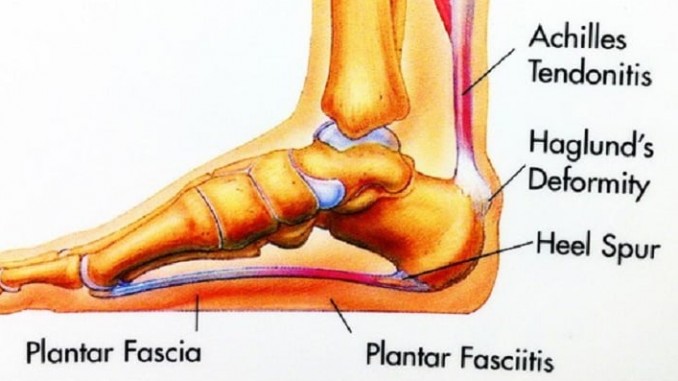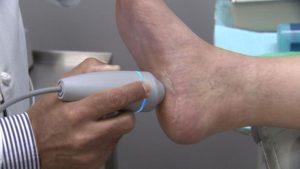nalco group
bone, muscle & joint pain physio
BOOK NOW / WHATSAPP ABOUT YOUR PAIN OR INJURY
- NOVENA 10 Sinaran Drive, Novena Medical Center #10-09, Singapore 307506
- TAMPINES 9 Tampines Grande #01-20 Singapore 528735
- SERANGOON 265 Serangoon Central Drive #04-269 Singapore 550265
Home > Blog > Plantar Fasciitis Causes, Symptoms and Physiotherapy Treatment
Plantar Fasciitis Causes, Symptoms and Physiotherapy Treatment
(A common Heel Pain)

We all have a plantar fascia in both our feet (refer to diagram above), close to our heel - it's a very thick fibrous tissue that connects our heel bone (calcaneal bone) to the base of our toes.
It's #1 job is to ensure that the arch of your feet is strong and maintained.
Unfortunately, plantar fasciitis, which refers to a painful condition and inflammation of the plantar fascia, is a very very common foot condition that leads to:
- pain in the heel
- pain in the sole
Usually patients experience a sharp stabbing or tearing pain if they stand on their feet first thing in the morning or standing up after sitting/resting for some time.
It can be quite painful...and is a very common heel pain actually.
Our Physio Expertise
...but don't over-worry, plantar fasciitis is one of our senior physiotherapists bread-and-butter ie we're very used to treating such conditions in our physiotherapy clinics.
Plantar fasciitis pain is predominantly caused by inflammation, so clearly identifying the causes/factors of the inflammation will be the key to successfully treat this condition and to ensure that it doesn't come back.
The most common cause of plantar fasciitis is the anatomy and the way we walk (termed as biomechanics), and the most common finding is that patients with this condition often overly-pronate their feet as they walk.
What this means is that the inside part of the feet turns inwards too much as they walk, jog or run - pronation over-stretches the plantar fascia, and doing this repeatedly and consistently just means that it consistently damages the plantar fascia.
Of course, if patient also wear inappropriate or non-supportive footwear and they walk a lot on hard, flat and uneven surfaces, that increases the strain on the plantar fascia and that will:
- cause plantar fasciitis to occur and/or
- aggravate existing plantar fasciitis conditions
plantar fasciitis is common in patients who:
- have extra/hyper-mobile foot joints
- have instability in their foot
- wears non-supportive footwear or footwear that doesn't provide enough support (or just too worn out)
- tend to be older, and has more stiffness in their foot
- walks a lot
- stands a lot
- active in sports especially brisk walking, running, jogging

Symptoms of plantar fasciitis
- pain in the foot especially on the inner portion
- sharp pain 1st thing in the morning or when standing up from resting
- dull ache later in the day
- pain in the plantar fascia that increases over time
Patients with plantar fasciitis report the pain experience as very sharp when the step on their feet
- first thing in the morning when they just get up
- when they step to stand after periods of resting/working
The pain starts of as sharp and stabbing, but it changes into more of a dull ache throughout the day, and this is because as we stand and walk, it actually stretches the plantar fascia.
heel pain and plantar fasciitis Physiotherapy interventions

Physiotherapy treatment plans and interventions depends on both the cause and the symptoms being experienced by our patients.
But before we can start with treatments, our foot and ankle senior physios will first need to:
- do differential diagnosis, to tell if it's plantar fasciitis or heel painful spurs
- understand the medical history and causes of the diagnosis
- palpate, assess and understand the severity of the condition
We may use a combination of the following:
- Ultrasound therapy to accelerate soft tissue healing
- If your plantar fasciitis has been around for a long time, we may need to restart the healing process using a variety of deep tissue stimulation
- Mobilization of your foot and ankle joints to increase the range and restore normal movement
- Taping (using Rocktape) to provide additional support to defray some of the weight and load on your plantar fascia
- If medically necessary, we may prescribe customized ankle-foot-orthosis (AFO) that is a custom-made splint specific to your feet, to be worn when you rest/sleep to keep your plantar fascia in stretched position.
- We may also introduce customized insoles for plantar fasciitis to support your feet, fascia and arch as you stand and walk
What should you do before you come to us for physiotherapy?
The earlier one seeks treatment for heel pains and plantar fasciitis, the better and faster one will recover.
The reason being that prolonged untreated plantar fasciitis can lead to worse orthopedic conditions
If you are unable to come to us immediately or if there is an element of delay, please consider doing:
- gentle stretches of the calf muscles
- gently message the feet and fascia
- wear soft/jelly slippers in the house
- cold therapy of your feet daily
- avoid activities that causes pain or flare ups of your plantar fasciitis

